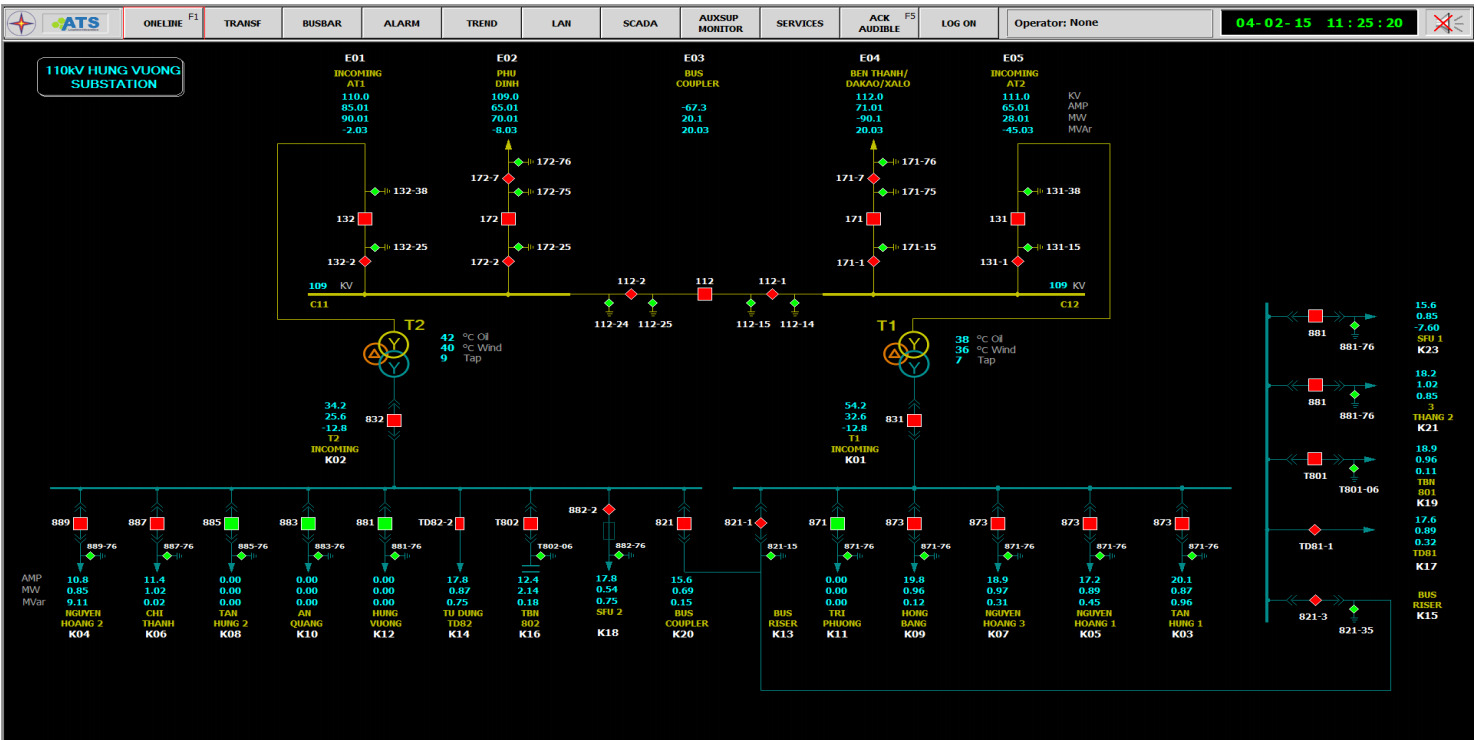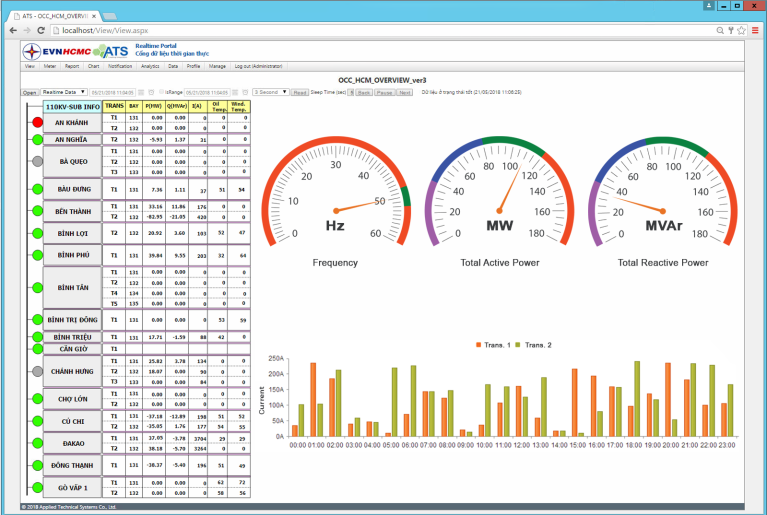
Features
- Intel-based hardware
- Identical and interchangeable versions which run on Windows Server
- Relational Database using standard procedures such as OCBC and SQL for remote access
- De facto Historical Information System (HIS) in popular use world-wide
- Standard local networks, such as FDDI (Fibre Distributed Data Interface) and Ethernet, supporting TCP/IP protocol
- User-friendly human-machine interface based on Microsoft Windows and SmartHMI Studio
- Multi-communication link: Leased line, Satellite, GSM/GPRS,Corporate WAN, Public Internet/ADSL
- Multi-protocol speaking: IEC-60870-5-101/104, IEC-61850,ICCP/Tase2/IEC60870-6, DNP 3.0, Modbus, RP570/571 (can be extended upon users’ requests)
Functions
- IEC-61970/IEC-61968 (CIM) model ready for advanced applications
- Unlimited amount of handled data points
- Modular and scalable architecture with off-the-shelf components
- Web-Service interfaces for data building and system configuration
- Access Security in compliance with Critical Infrastructure Protection (CIP) issued by NERC.
- Tasks are distributed among multiple servers and workstations using a highly modular client-server architecture. This approach allows for efficient allocation of tasks to different processors based on the size and complexity of each implementation, minimizing network traffic and enhancing system performance. Critical functions with high availability requirements can be duplicated through hot-standby configurations.
- A user-friendly graphic interface allowing operators to perform their tasks with minimal computer knowledge and reducing“start-up” time
- Ready for future utility interface bus integration
- 24/7 maintenance service

Flexible and Reliable Solution
Contact us to explore the possiblities
Let our expert team assist you in transforming your power infrastructure. The first step towards maximizing efficiency and reliability in the Australian power market.

